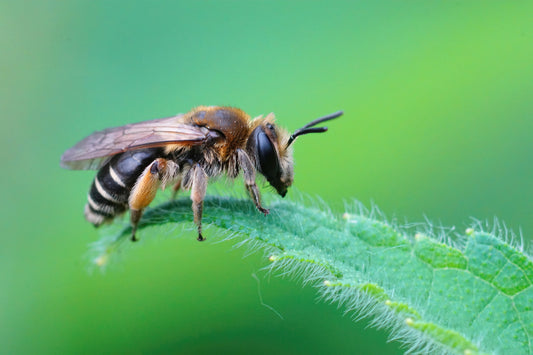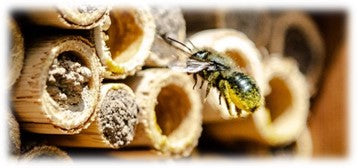
Have you ever stood in a garden center, overwhelmed by beautiful plants, only to get them home and watch your "seamless" pollinator garden turn into a patchy disappointment? You're not alone if you've carefully selected gorgeous plants only to discover they all bloom at exactly the same time, leaving your garden barren for months while pollinators desperately search for food sources.
Here's the hard truth that most gardeners discover too late: choosing plants for their peak beauty while completely ignoring critical transition periods is what makes or breaks pollinator support. Successful transition planting isn't about having the most flowers; it's about having the right flowers at the right time for your specific region.
The Regional Reality Most Gardeners Ignore
After helping hundreds of pollinator enthusiasts across different zones, I've discovered that generic plant lists are virtually useless. A spring bloomer in Georgia behaves completely differently than the same plant in Colorado, and what works in humid climates often fails miserably in arid regions.
Map frost dates for your region and adjust timing based on microclimate aren't just suggestions – they're the foundation of transition plant success. Your last frost date, summer heat patterns, and fall cooling schedule determine everything about which plants will actually bridge your bloom gaps.

The shocking reality? Most pollinator gardens fail because gardeners use plant recommendations from the wrong climate zone. I've seen gorgeous butterfly gardens in Texas planted with Northeast timing recommendations, resulting in expensive disasters.
Your Strategic Approach to Regional Plant Selection
Understanding Your Foundation
Before selecting any plants, you must master your specific growing conditions. Test soil quality and pH in potential locations, because regional soil differences dramatically affect bloom timing. Document your actual frost dates for the past three years, not just zone averages. Track soil temperature, not just air temperature – this determines when roots can support new growth.
Create a simple chart tracking when existing plants actually bloom in YOUR garden, not when books say they should bloom.
Connecting with Local Expertise
Contact native plant societies for insider knowledge about which varieties actually thrive in your specific conditions. These local experts understand your regional challenges and can recommend plants with proven performance in your exact climate conditions.

Connect with local Cooperative Extension offices and Master Gardener programs for real-world performance data. This insider knowledge is worth more than any generic plant list.
Your 5-Step Regional Selection Process
Step 1: Master Your Microclimate Data
Document your actual frost dates, soil conditions, and existing bloom patterns. Every region has a unique timing that differs from published averages.
Step 2: Map Your Specific Gap Periods
Most regions have 2-3 predictable gap periods when pollinator food sources become scarce. Identify YOUR specific problem periods rather than assuming generic timing.
Step 3: Select Plants with Proven Regional Performance
Work with local native plant societies and extension services to identify varieties that have demonstrated success in your specific conditions. Avoid plants that are "zone appropriate" but not regionally tested.
Step 4: Plan Your Installation Timeline
Schedule succession planting dates to extend individual plant bloom periods. Plant the same species at 2-3 week intervals for extended coverage. Fall planting works better for most transition plants because it allows root establishment before bloom demands.
Step 5: Create Your Transition Plant Calendar
Create a color-coded bloom calendar with actual regional bloom times, not generic recommendations. Include backup plants for each transition period in case primary plants fail due to weather extremes.
Advanced Strategic Planning
Sequential Blooming Strategy
Plan 3-week overlap between bloom cycles to ensure continuous pollinator support. Create a monthly bloom timeline chart to visualize gaps and overlaps in your garden's bloom schedule.
Succession Planting Approach
Choose plants that naturally succeed each other in your region's wild ecosystems. They've evolved together and will transition more smoothly than random combinations.
Documentation and Monitoring
Document previous years' bloom patterns and adjust timing based on microclimate to refine your approach annually. Real-world data from your specific garden is more valuable than any generic recommendation.
The Results You Can Expect
When you implement region-specific transition planting strategies, gardeners consistently report:
-
Pollinator activity remains steady through the previous gap periods
-
Garden maintenance decreases because regionally appropriate plants require less intervention
-
Plant survival rates increase dramatically compared to generic recommendations
-
Overall, garden performance improves as plants support each other through natural succession patterns
Your garden becomes a reliable pollinator resource rather than a boom-bust cycle that leaves beneficial insects scrambling for food sources.
Your Regional Action Plan Starts Now
Ready to eliminate bloom gaps with plants that actually work in your region? Start by documenting your current bloom calendar this week – take photos of what's blooming now and set reminders to check weekly through the season.

Then connect with your local cooperative extension or native plant society for region-specific plant performance data. This insider knowledge is worth more than any generic plant list.
What's your biggest regional challenge for transition planting? Share your location and specific bloom gap problems in the comments below – I love helping fellow pollinator gardeners solve their regional puzzles!




